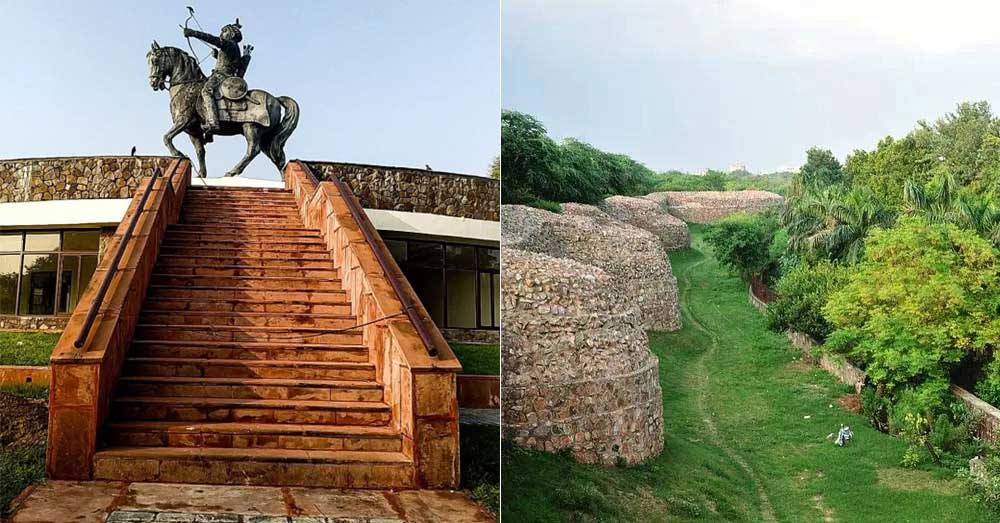
Qila Rai Pithora, located in Mehrauli, is considered the first city of Delhi, built by the Chauhan ruler Prithviraj Chauhan in the 12th century. The monument, known for its historical ruins, is now being revitalized as the venue for a major cultural exhibition — the Piprahwa Gems and Relics Exhibition. This initiative aims to merge Delhi’s ancient urban heritage with India’s spiritual and archaeological traditions.
Discovery of the Piprahwa Relics
In 1898, William Claxton Peppé, a British landowner, discovered a stupa at Piprahwa village in Siddharthnagar district, Uttar Pradesh. The excavation revealed Buddha’s sacred relics, including bone fragments, crystal caskets, gold ornaments, gemstones, and symbolic motifs like lotus petals and the Buddhist Triratna. These relics are believed to date back to the Mauryan period, highlighting India’s ancient Buddhist art and craftsmanship.
The Upcoming Exhibition
The relics and gems are being exhibited inside a newly constructed 1,013-square-meter hall within Qila Rai Pithora. The hall features a replica stupa at its center to recreate the sacred ambiance of the original Piprahwa site. The exhibition will run for six months and display not only the relics but also sculptures, manuscripts, paintings, and ritual objects from the Buddhist cultural tradition.
Cultural Repatriation and Heritage Diplomacy
The Piprahwa gems had recently appeared in a Sotheby’s auction in Hong Kong, but the sale was halted after India’s intervention. Later, through a public–private collaboration with Godrej Industries Group, these artefacts were successfully brought back to India. This case demonstrates India’s growing emphasis on cultural repatriation and heritage diplomacy, aligning with global efforts to protect and reclaim ancient artefacts.
Significance of Buddhist Heritage
The exhibition underscores India’s deep connection with Buddhist heritage, reflecting both its ancient spiritual identity and modern cultural outreach. It also reinforces India’s soft power diplomacy by promoting Buddhism as a unifying cultural link across Asia, especially with countries in the ASEAN region. The event supports India’s Buddhist Tourism Circuit, linking historical, archaeological, and religious dimensions.
Relevance for UPSC Examination
Prelims Focus:
- Location and history of Piprahwa Stupa.
- Significance of Qila Rai Pithora as Delhi’s first city.
- Cultural repatriation examples (Piprahwa gems, Chola idols, etc.).
Mains Focus (GS Paper 1 & 2):
- Role of art, architecture, and religion in Indian civilization.
- India’s efforts in heritage conservation and soft power projection.
- Cultural diplomacy and protection of national heritage.
Conclusion
The Piprahwa Gems Exhibition at Qila Rai Pithora is more than a cultural display — it symbolizes India’s commitment to preserving its heritage and reclaiming its lost history. It bridges the past and present by connecting Delhi’s earliest city with Buddha’s timeless legacy, making it a perfect example of how history, archaeology, and diplomacy converge in modern India.
